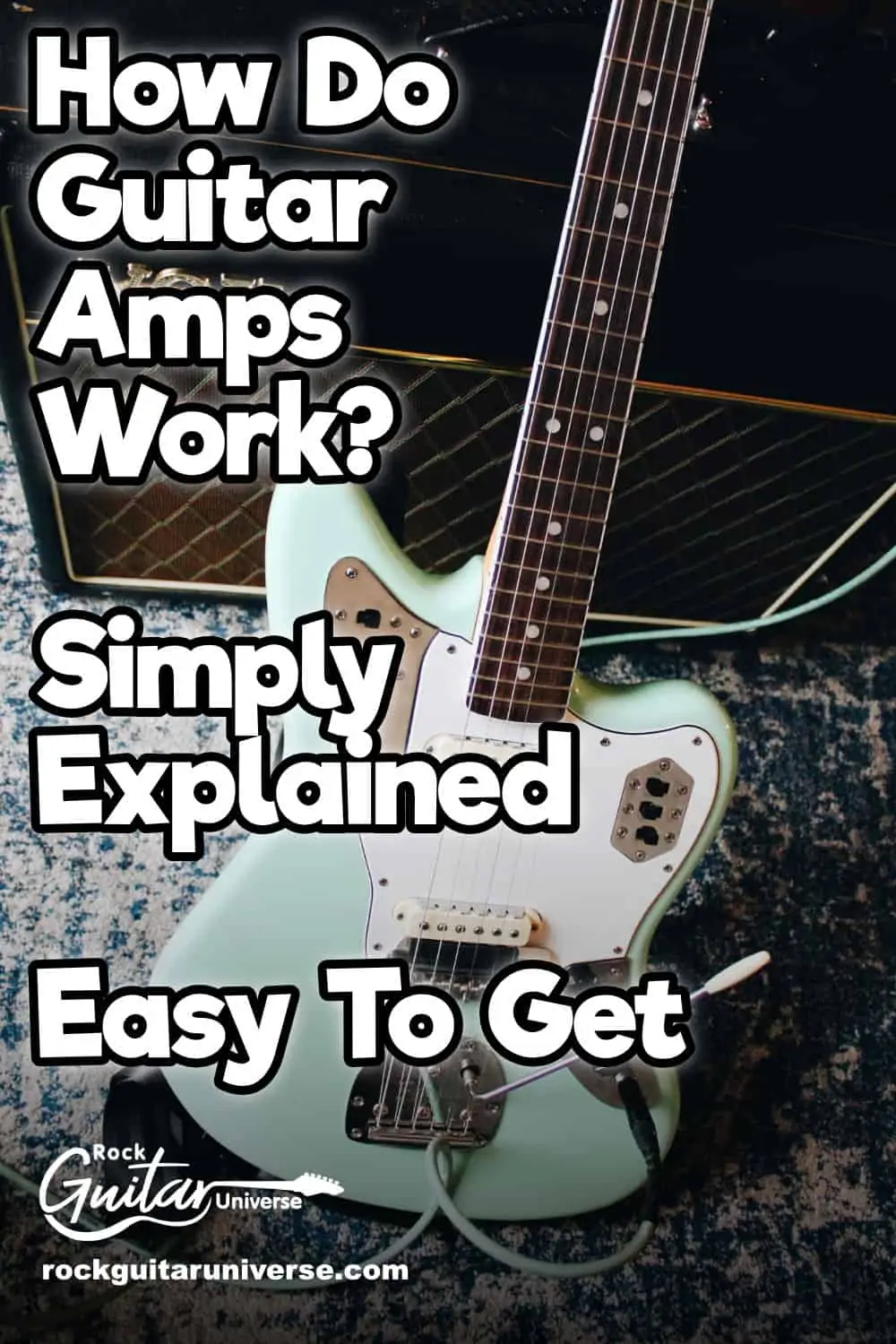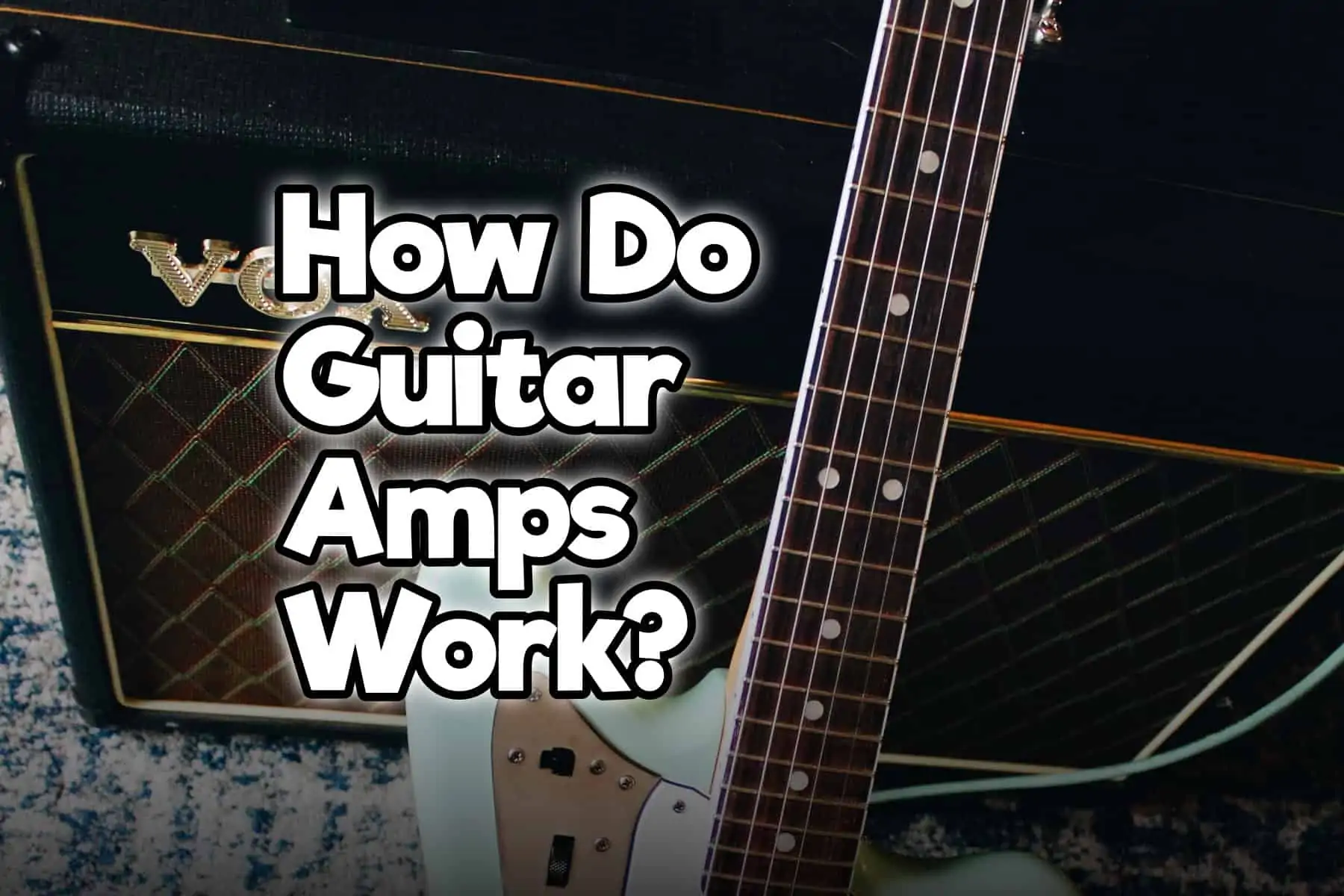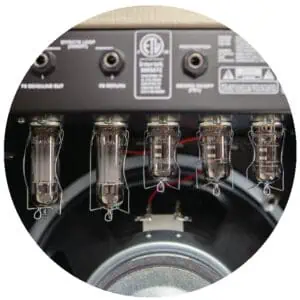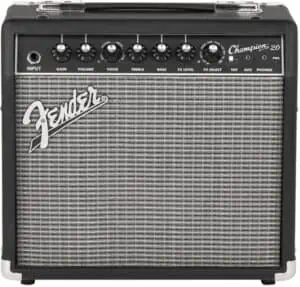When we think of electric guitars, it is hard to imagine one without an amplifier. Guitar amps have become an essential part of every guitarist’s life, and you can even imagine being without one. The amp is an electronic device used to strengthen the signal coming out of the guitar. If you ever tried playing an electric guitar without one, you quickly realized that it would be impossible for anyone to hear what you play.
So how do guitar amps work? The guitar amp contains a power amplifier inside the box or a preamp. Usually, the amplifier will have a speaker as well, so you won’t need a separate box to be able to play the guitar. The signal will travel from the guitar’s pickups to the amplifier where it will be amplified or enhanced and then to the speaker so we can hear it.
There are several ways you can amplify the sound coming from the guitar, and the most common ones are using transistors or vacuum tubes.
Signal Travel Break Down
Before I dive deeper into the technicalities and how amplifiers work, you need to understand how pickups work. In the end, it is the signal from the guitar that gets strengthened in the amplifier.
The pickup is created using copper wire and wrapping it around a permanent magnet. On some guitar pickups, you’ll be able to see magnetic poles that are usually located underneath each string. The poles are used to focus the magnetic field. Now, when you pluck a string, the string will vibrate and create a disturbance in the magnetic field created by the permanent magnet. Finally, the moving magnetic field will induce a small current in the coil of the pickup.
The pickups are usually created using a permanent magnet like ferrite or alnico, and humbuckers will work the same way except they will have a double coil instead of a single one.
The current that inducts in the coils of the pickup is rather small, but this is where amplifier comes to the scene. An amplifier is used to strengthen this current or signal and amplifying it, creates something that can be heard and used for playing.
When the signal enters the amplifier, on the input, the circuit will amplify the signal twenty or even fifty times. After that, the output transistors will add current to the amplified signal before it is sent to the speakers. Since the transistor circuits can take small voltage on the input and turn it into a larger voltage on the output, this will create a difference in the sound and make the guitar sound something that you can actually hear.
Usually, the amplifiers will have two stages. The first one is a preamplifier or pre-amp. The audio signal that comes to the preamp is amplified to a certain level so it can drive the power stage. Furthermore, the preamp phase will also shape the sound and the overall tone of the signal. Interestingly, high preamplifiers can add overdrive to the tone as well. The second stage or the power amplifier will produce a high current signal that will be able to drive the loudspeakers and thus create sound.
If you are interested in buying an amp you don’t have to buy it new. However, you need to check it carefully and I have just the post for you All You Need To Know Before You Buy A Used Guitar Amp
Type Of Guitar Amps
There are three main types of guitar amps
Tube Amps
Tube amps have been around for a while. Before the transistors became popular and part of everyday electronics, the amplifiers used tubes or valves. Before the seventies, it was impossible to find solid-state amp, and tubes were the only type of amps available.
While tubes became outdated in everyday use, like in television, for example, they still remained in music equipment. Tubes have the same role as transistors and they will amplify the sound.
Vacuum tubes will enhance or amplify the signal that comes out of the guitar, allowing it to travel to the speakers so we can hear it.
The tubes are created similarly to a regular light bulb. They are an electronic device that controls the flow of the current in a high vacuum between the two electrodes. Usually, valve amplifiers will have two switches. The first one will be simple on and off, while the second one is used for standby. The main reason for this is because the tubes need time to heat up. If you ever saw an older light bulb, you might have noticed that it gets brighter and brighter until it starts working at max potential. Similarly, the tubes in the amplifiers need to heat up before you can start playing. The heated cathode on the valve is used for amplification because of thermionic emission.
The tube amps are quite fragile because the valves themselves are made of glass. Furthermore, they require a lot more maintenance since the valves sometimes need replacement. Finally, the valves were mostly outdated because of the large energy consumption. It is estimated that fifty percent of energy is wasted on heat.
Solid-State Amplifiers
Solid-state amplifiers are something every guitar player probably had. They are built using transistors and semiconductors to amplify the signal. The reason why these are so popular is that they are cheaper to make, thus making it more affordable.
One of the main advantages of solid-state amplifiers is that they are sturdy and a lot less fragile compared to the tube ones. Since tube-amps have valves which are made of glass, solid-state ones are easily transported and great for gigs.
When it comes to modifying the signal, solid-state amps use transistors and electronics to amplify the signal coming out of the guitar. The signal from the guitar goes directly into the input of the amplifier. From there, the signal is enhanced using transistor circuits.
The electronic circuits using transistors as amplifiers quickly replaced tubes. The main idea behind these circuits is that the small change in the voltage on the input will produce a large change in the output voltage. There are so many configurations available where only one transistor is used. Among the advantages of using transistors is that they use very little energy to work. Imagine your phone or mp3 player that can play music for hours running on a single battery.
Hybrid Amplifiers
One of the newest additions is the so-called hybrid amplifiers that combine the two previous versions. The idea is to keep the tubes but not entirely. As a result, we have many amps today that have one or two valves in preamp only. And the rest of the circuit is created using transistors and diodes.
This is one of the interesting options that will combine the two and seemingly combine the best of both worlds. But in the end, there are so many differences between these two, and there are players that prefer either one or the other amplifier.
Amplifier Controls
You are probably aware that amplifiers have knobs on the top (or side), and that these are used to control the sound. Most amplifiers will have several options like to adjust volume, some might offer drive level, treble, middle, bass, reverb, and so on.
But how does this work? There are so many different options, and we can’t imagine playing an electric guitar today using a straight signal from the amp without any effects. The whole point of the electric guitar is in the variations available and everything we can do with the signal.
Distortion
Solid-state amplifiers are able to create and enhance the sound without adding a natural distortion, unlike the valve amps. The opinions are different and many players prefer the lighter tone solid-state amps create. Tube amps, on the other hand, create a natural distortion that is usually described as being warm. Furthermore, this makes them more versatile and they are handling overdriven sound much better than the solid-state amps.
Tube amplifiers can produce distortion through equalization, preamp, power-tubes, and so on. This is one of the reasons why many technicians put a microphone directly in front of the speaker instead of using the preamp signal.
Distortion is a term used to describe altering of the sound usually by adding gain. Gain is determining how hard you’re pushing the preamp part of the amp. The effect will alter the original signal by clipping it or pushing it beyond the maximum capabilities. As a result, it will shear off the peaks and troughs of the wave of the signal. Furthermore, it will add harmonic and inharmonic overtones that will create the sound we all love.
While terms overdrive and distortion are used to describe the same thing, there is a difference between these two. Distortion is an extreme version of overdrive. Similarly, the fuzz will act as a version of the distortion and it was created initially when guitarists used faulty equipment.
Valves can create distortion by pushing them beyond their normal rated maximum. Unlike solid-state amps, tubes will create a soft clipping which creates both odd and even harmonics. On the other hand, solid-state amps can be created to produce hard clipping resulting in dirtier and grittier tone, while valves will create a warm one. The signal in solid-state amps is usually clipped using diodes.
Tone Controls
Almost every guitar amplifier will have tone controls besides distortion. This is a form of equalization that will make specific pitches or frequencies louder or softer. Usually, the equalizer circuit is placed between the preamp and power amplifier, and it will allow the user to adjust the tone that comes from the speaker.
The first one is usually a master volume and it is in charge of how loud your amp will be. If you turn it to zero, you will hear nothing. Master volume is usually located in the power amp part of the circuit, and it is usually a simple variable resistor. By turning it one way or the other, you will adjust the voltage divider. By turning it one way or the other, you will change the voltage between zero and input voltage and get silence or full volume on the speakers.
The other controls are usually bass, middle, and treble. These are used to adjust the signal. By turning the bass potentiometer, you will adjust the signal in the bass area or lower frequencies. The middle will adjust mid-range frequencies, and treble is used to change the higher frequencies.
Usually, the cheap amps will only offer volume, bass, middle, and treble, and there are even ones that will have volume, bass, and treble only. However, on the more expensive ones, you might be able to see effects like reverb, that’s usually an additional effect placed after the preamplifier. One of the popular and highly praised versions of the reverb is known as spring reverb, and it can be found in more expensive amplifiers, that use springs instead of digitally adding the effect.
What Amp Type You Should Choose
There are many discussions between whether tubes are better than transistors and in the end, it all comes down to what you prefer as a player and budget. Both have advantages and disadvantages and saying that one is better than the other would be misleading.
Interestingly, both tube and solid-state amplifiers come as an amp only. There will be no speaker, and you won’t be able to play the guitar using them if you don’t find a speaker for them. Most of the cheap amps will come as solid-state and as a, what guitar players call combo. The combo is a term used to describe an amplifier that comes with a speaker in the same box. The box for the amp is usually made of wood, and the tone controls would be located on the top, while the bottom part is the speaker only.
However, it is possible to find an amp only, without the speaker. This combination is usually used on high-end equipment where you will have to get a stack or several stacks where there will be one or even four speakers in a box.
The other thing I should mention for shaping the sound of the guitar is effects and pedals. There are amps with drive, reverb, and whatnot, but it is still possible to get any of these effects in a pedal. By using a pedal, you will plug the guitar into a pedal, and then connect that pedal to the amplifier, this way, you will get already modified tone to the preamp.
Of course, the better amplifiers will come with an effect loop, where the sound will come directly from the guitar to the preamp section. After that, the pedals will alter the sound that is already amplified and send it to the power section. The amplifiers with effect loops are extremely popular and the reason for that is that they will act as if all of your pedals are located in the amp from the beginning.
Summary
I only scratch the surface of the whole theory behind the amplifiers and how the sound is changed for the electric guitar. There are so many things that you can say about this subject, and many people spent decades trying to improve and invent something new. Furthermore, I tried to simplify the whole process to avoid having to talk about advanced electronics and theories.
Depending on the music genre you play, you might like one type more than the other, and that is perfectly normal. Blues guitarists won’t really like heavy distortion, and heavy metal players, on the other hand, will find slightly warm overdrive boring. That is why, you should find the amp that works best for you, and enjoy your music journey.
If you found this article useful, you may want to save this pin below to your Guitar board.

2 thoughts on “How Do Guitar Amps Work? Simply Explained, Easy To Get”
Leave a Reply
Recent Posts
Some guitarists insist on buying an expensive amplifier with their electric guitar. They assume that this is a must for every type of guitarist out there. However, in some situations, this isn’t...
Top 50 Free Realistic Guitar VST Plugins With Sound Examples
As technology has rapidly advanced in the recent decade, computers are stealing more and more roles from physical musical instruments and accessories. Nowadays, you do not need expensive amps,...





Great article, thank you
No problem, thanks for reading 🙂